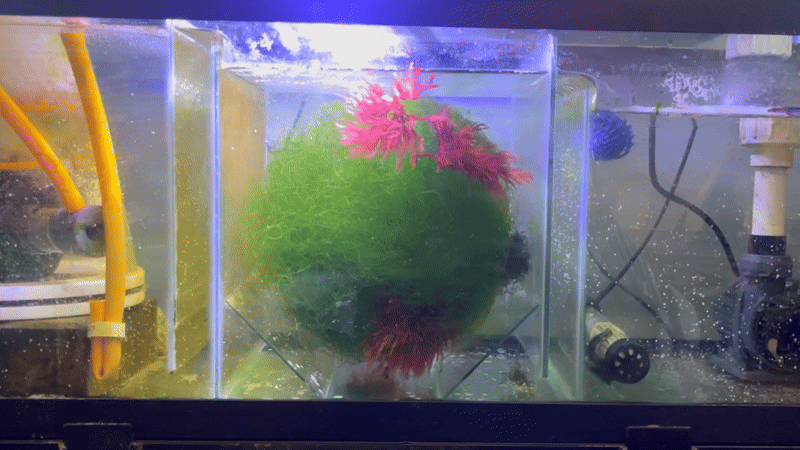
Coral Reef Aquarium
*A Work in Progress*
This is my 55 gallon reef aquarium, a project that continues to evolve. I've always been enamored by the ocean and wanted to bring a piece of it into my home. After a few years away on a boat and in the Peace Corps, I’m rebuilding this system—not just restoring it, but improving it with everything I’ve learned along the way. My goal is to create a vibrant ecosystem filled with soft corals, LPS corals, and macroalgae while keeping the system as low-maintenance as possible. The lessons learned here will guide me as I scale up to my 8 foot long aquarium.

The display tank is a standard 55 gallon, while the bottom is a custom 33 gallon sump that I cut and built to fit the available space. To route the overflow and return lines, I had to drill holes directly through the glass—a nerve-racking process with a lot of potential for failure. Altogether, this setup weighs over 900 pounds. To keep it from plunging through into the restaurant below, and to keep it level on the uneven floor of my apartment, I had to fabricate custom adjustable feet for the stand.
I built a double reverse Durso system to slow the water entering the sump, reducing noise and allowing bubbles to dissipate without splashing. Because my filtration is fully exposed rather than tucked away in a cabinet, I had to refine this design to keep the system quieter and more controlled. Keeping everything out in the open allows me to closely monitor and adjust the setup as I learn to maintain system balance.


I've been slowly filling this aquarium with a diverse mix of soft corals, LPS corals, and macroalgae, creating a vibrant, dynamic ecosystem. Each new addition makes the tank feel more alive.
I wanted my chaetomorpha—a macroalgae that removes excess nutrients—to roll around, but I didn’t want to add extra pumps or powerheads. To achieve this, I designed the sump to produce a rolling flow in this chamber, keeping the chaeto in constant motion. This setup improves growth by ensuring even light exposure, helping to maintain water quality and nutrient balance. It runs on a light cycle opposite to the display tank, which helps stabilize pH by maintaining more consistent gas exchange throughout the day and night.


Water evaporates, and when it does, only the freshwater leaves—salt stays behind, increasing salinity. To prevent these fluctuations, I built an auto-top-off system with a few gallons of reserve deionized water.
Mollies are hardy, inexpensive fish commonly found in freshwater aquariums, but they’re native to brackish environments. As the first inhabitants of this system, they played a crucial role in jumpstarting the nitrogen cycle while also serving as "canaries in the coal mine" to monitor water quality. I slowly acclimated them to full saltwater conditions, and they’ve thrived—grazing on algae and helping to establish a balanced ecosystem.


As I slowly add marine species to the tank, I’m committed to only buying aquacultured animals. Many wild-caught reef fish face serious threats from overharvesting, habitat destruction, and unsustainable collection practices. By choosing captive-bred species, I ensure that my reef tank doesn’t contribute to the decline of wild populations.
This tuxedo urchin and emerald crab have formed an unlikely friendship—they’re almost always side by side, exploring the rockwork together. Beyond their charm, they’re also part of the tank’s cleanup crew, helping maintain balance by eating algae and detritus. A reef tank is never truly self-sustaining, but with the right mix of creatures, it can come pretty close.


The urchin started causing trouble, picking up stones (as seen above), snails, and loose coral frags, then dropping them in inconvenient places around the tank. This species likes to carry objects on its back for protection, so I 3D-printed a tiny cowboy hat for him and named him Buck. Buck hasn’t dropped his hat once—he really seems to enjoy wearing it.
Pulsing Xenia is often dismissed by reef aquarists—considered unremarkable, or overly common. But for me, it's one of the most captivating corals in the tank. Its rhythmic pulsing isn’t just visually striking; it’s a rare example of a coral exhibiting autonomous movement. It's my favorite!







